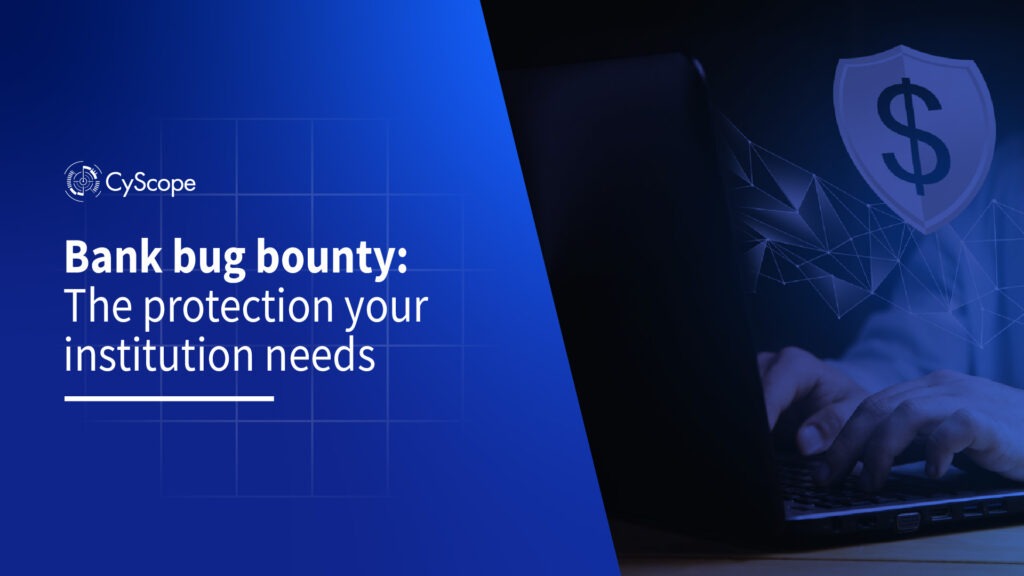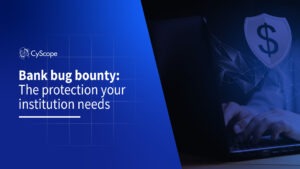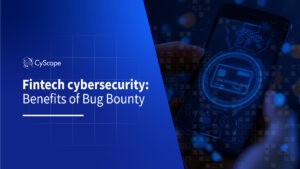While processing millions of transactions daily, an ethical hacker in Belgium finds a critical vulnerability in your new mobile payments API. Within 72 hours, your team fixes it before cybercriminals can exploit it. This isn’t science fiction: it’s the power of a well-implemented banking bug bounty. In an industry where a single breach can cost millions and your customers’ trust, reactive security is no longer enough.
In this article, you’ll discover why bug bounty programs are the strategic ally that banks, credit unions, and regulated fintechs are adopting to protect their most critical assets.
Why does banking need Bug Bounties? 3 unavoidable risks
1. APIs: The Achilles heel of modern banking
Threat:
A misconfigured endpoint could allow:
- Unauthorized fraudulent transfers.
- Card data leakage (PAN, CVV).
- Real-time balance alteration.
2. Regulatory compliance: Where findings become evidence
Regulations such as PCI DSS require:
- Periodic penetration testing.
- Continuous risk monitoring.
The problem:
Spot audits do not detect flaws introduced in weekly updates.
3. Insider threats: The invisible enemy
Critical fact:
34% of banking breaches involve employees or former employees (Verizon DBIR 2024).
Risk:
Improperly revoked privileged access, deliberately weak configurations, or credential leaks.
Banking bug bounty vs. traditional audits: The difference that changes everything
| Parameter | Traditional Audits | Banking Bug Bounty |
| Frequency | Punctual (1-2 times/year) | Continuous (24/7/365) |
| Coverage | Limited sample of systems | All exposed assets |
| Expertise | In-house team or external consultant | 450+ global ethical hackers |
| Cost-efficiency | High fixed cost | Pay only for valid findings |
| Speed of response | Reports in weeks | Critical reports in 72 hours or less |
3 Key Benefits of CyScope for Banking
1. Community specializing in financial challenges
Our 450+ ethical hackers include experts in:
- Banking protocols (SWIFT, ISO 20022).
- Legacy core banking (Temenos, Finacle).
- Digital wallets and P2P payments.
2. Compliance without headaches
Automatic evidence generation:
Reports aligned with PCI DSS Req. 11.3, or local regulations.
Intelligent prioritization:
Vulnerabilities are ranked by actual financial impact (e.g., account access = critical; cosmetic failure = low).
3. How do we implement continuous security without disrupting your operations?
Seamless integration:
- We connect to your systems via API: Jira for vulnerability management.
Legal protection:
- All researchers sign confidentiality contracts.
- Clear responsible disclosure policies.
You might be interested in: Cybersecurity in banking: an essential pillar
Conclusion: In banking, trust is earned with facts, not promises
A banking bug bounty is not an expense: it is the insurance policy that protects your reputation, capital, and operating license. As cybercriminals innovate, CyScope harnesses the collective intelligence of hundreds of ethical hackers to become your most strategic advantage.
Ready to discover what vulnerabilities are hidden in your systems? Schedule a free demo and find out how a banking Bug Bounty can protect your entity.





